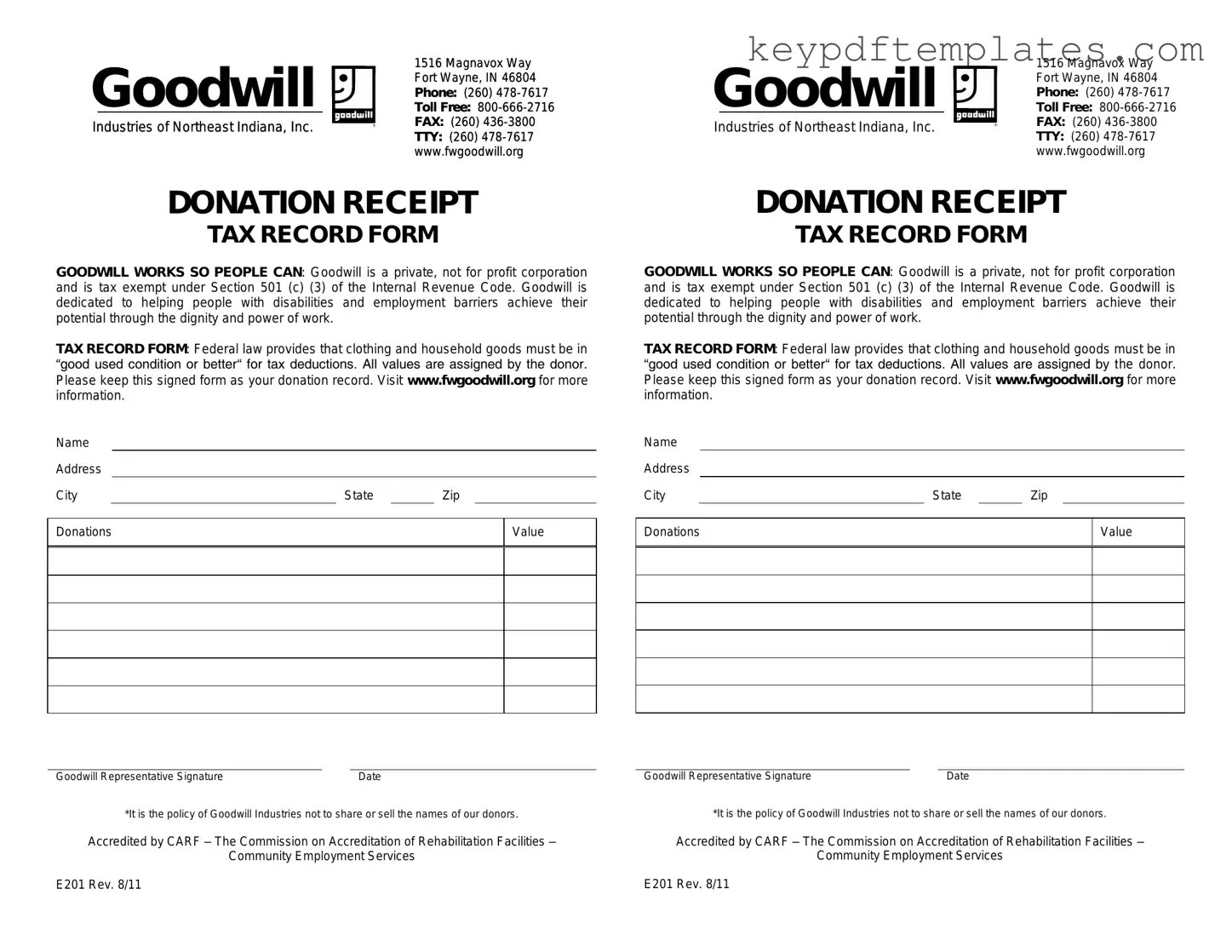Get Goodwill donation receipt Form
The Goodwill donation receipt form is a document provided to donors when they make a charitable contribution to Goodwill Industries. This form serves as proof of the donation for tax purposes and helps individuals keep track of their charitable giving. It typically includes details such as the date of the donation, a description of the items donated, and the donor's information.
Modify Document Online
